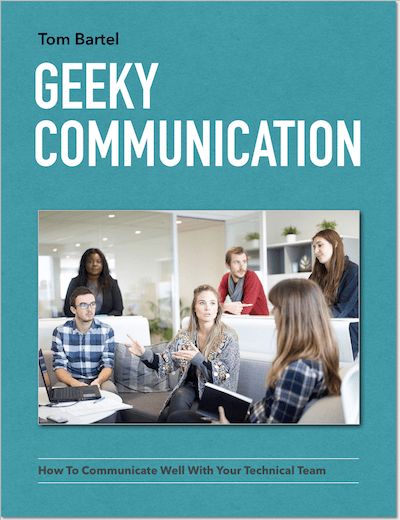
I am a middle child, with an older brother and a younger sister. My brother was pretty jealous of me when we were little, so, in order to avoid triggering his jealousy, I learnt early on to care about his interests, sometimes as if they were my own. When my sister entered the scene, this tendency was even intensified. She was the first girl in the family, and under “special parental protection” - meaning that if she was unhappy, one of her brothers was likely to be identified as the culprit. Better keep her happy, then. Besides, I loved her very much from the start, so I was intrinsically motivated to see her happy. In short, I developed a talent to sense if those around me were happy, and often did not mind taking a step back so that their needs could be met.
While this might sound like weakness or a drawback at first glance, I consider it a huge advantage in a lot of situations. I often found myself caught in the middle, so I became a natural mediator. I wanted to understand each side in a conflict, and was often the one who would listen to and talk to all people involved.
While I was good at mediation, I was crappy at direct confrontation and conflict. I avoided it. By my very nature, I rather want everybody to get along. Directly contradicting somebody is rarely part of that.
In a management position, this first character trait - the mediator part - can be very helpful. Whenever you deal with people, it is useful to know if they are happy, sad, content, angry, or nervous. However, the second trait - the conflict avoidance - can get you into trouble. One example for such trouble is the practice of shuttle diplomacy, where, in order to avoid direct confrontation between conflict parties, you talk to each party separately.
Shuttle diplomacy in action

In practice, shuttle diplomacy might look like this: Stella, a product owner, is angry at Marc, a developer. She complains to you, Marc’s team lead, and says that he delivered a feature that has to be re-done from scratch already, because he did it in a sloppy way. You are not aware of how this particular feature was developed, so you cannot answer in a qualified way. You listen to Stella’s complaint and decide to investigate.
Later, you talk to Marc. He says that the feature was not meant for production, and of course it had to be re-done, because he was asked to develop a prototype, so that is what he delivered. You agree that prototypes are not meant for production. Note: At this point, chances are that both Stella and Marc think that you agree with them - after all, you did not contradict any of the two.
But, wanting to resolve this thoroughly, you talk to Stella once more and ask her if she indeed asked Marc to develop a prototype. She answers yes, this was the original plan, but at some point, it became clear that the company would want to move forward with this feature. So she asked Marc how much more time he would need to build it properly, and she gave him that time to do so. Sigh. Back to the beginning.
You could talk to Marc again, but you realize the pattern. Whenever you talk to one side only, things look very obvious, and the other side is at fault. Talk to the other side, and new facts and details come to light that change the scene entirely. Because you cannot get hold of people whenever you like - they will be busy, in meetings, out to lunch, etc. - this back-and-forth will take a lot of time. Before you know it, days have passed, and each side still thinks they are right, and, in the worst case, they might still think that you agree with them. You will be annoyed by the procedure, and so will they. Conflict resolution, like feedback comes with an expiration date. Once that date passes, everybody will want to move ahead and forget about what happened, and bringing it up again and again will not help anybody.
Dangerous silence
Ben Horowitz, in The Hard Thing About Hard Things, explicitly warns about listening to somebody complaining about a colleague and just nodding along. In his context of advice to CEOs, he writes about executives, but I think the message can be transferred to a lot of other situations:
“Be careful about how you listen and the message that it sends. Simply by hearing them out without defending the employee in question, you will send the message that you agree. If people in the company think that you agree that one of your executives is less than stellar, that information will spread quickly and without qualification. As a result, people will stop listening to the executive in question and the executive will soon become ineffective.”
What Horowitz says is that having their authority undermined is particularly damaging for persons in leading positions, because their effectiveness depends a lot on the respect and credibility they have. But even when you are faced with complaints about an individual contributor, consider that your reaction to the complaint - whether you let it pass silently or if you defend the accused - might have effects beyond the boundaries of this room and this conversation.
He said, she said
When faced with a “he said, she said” situation like the prototype example above, it is generally better to get both people in the same room. At the beginning of my management journey, I used to avoid that, because I feared the tension that would fill the room, and the direct confrontation in general. Instead, I used to talk to people separately - classic shuttle diplomacy. I thought I could act as a buffer which would neutralize the negative feelings on either side. I was wrong. Negative feelings would not just go away, each side most likely still thought they were right, and the entire process was just ineffective.
After a few frustrating shuttle diplomacy experiences, I decided to use direct confrontation to resolve issues. The good thing about it is that, as the mediator, it is not even your direct confrontation. It’s theirs, and you are little more than a bystander who comments on the dialog once in a while, or asks clarifying questions. You will not have to reconcile the contradictions in your head any more, but you can guide a conversation that will filter out the arguments that do not hold, until you are left with something that all people can agree on.
Another Ben Horowitz quote sums up the advantages of this strategy, and points out the danger of not doing it:
“Generally, the best way to handle the [complaints about behavior] is to get the complaining executive and the targeted executive in the room together and have them explain themselves. Usually, simply having this meeting will resolve the conflict and correct the behavior and improve the relationship (if it was actually broken). Do not attempt to address behavioral issues without both executives in the room. Doing so will invite manipulation and politics.”
This quote ends with a strong warning: Talking to both people separately will invite manipulation and politics. This is certainly not what I intended when I practiced shuttle diplomacy - my intentions were actually quite good. But there are always multiple versions of the truth, and several perspectives to view it. Certain aspects of the conflict can be exaggerated, others can be left unmentioned. This is how you, as an impartial third party, can be manipulated if you are not very careful. Having both parties in the same room protects you from this manipulation.
Conclusion
While conflict avoidance is not a bad thing in itself, it can do harm in some situations. When there is an issue between two of your colleagues, direct confrontation is usually a lot more effective and time-saving than talking to people separately. Remember, as a mediator, it is not your conflict. Getting people to talk is a good thing, and it is your job when there are unresolved issues on your team. Moreover, while being open to your colleagues’ thoughts is a good thing in principle, be mindful of your reaction to complaints about your people. A closed door does not always stop news - or rumours - from spreading.
Time investment
This blog post took me roughly 2.5 hours to compose.
Want to learn more on communication? Check this out:

Yours free: An ebook on effective communication!
Get Geeky Communication absolutely free, and learn about effective communication in a technical environment. Just enter your email address below. No spam ever, guaranteed.
 I'm Tom Bartel, Germany-based software developer, engineering manager, speaker, and human communication geek. More
I'm Tom Bartel, Germany-based software developer, engineering manager, speaker, and human communication geek. More